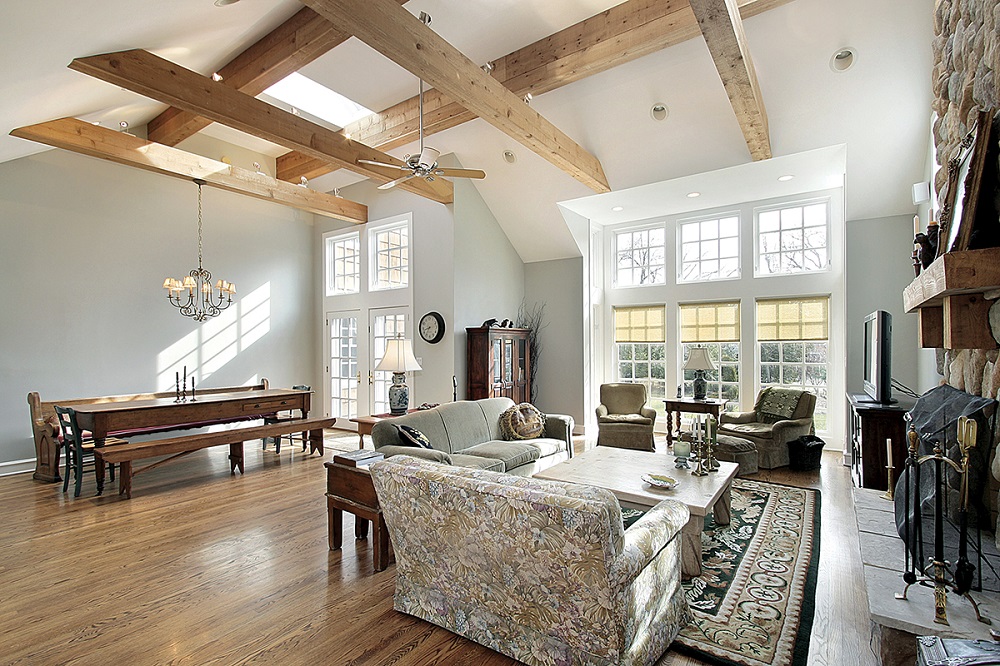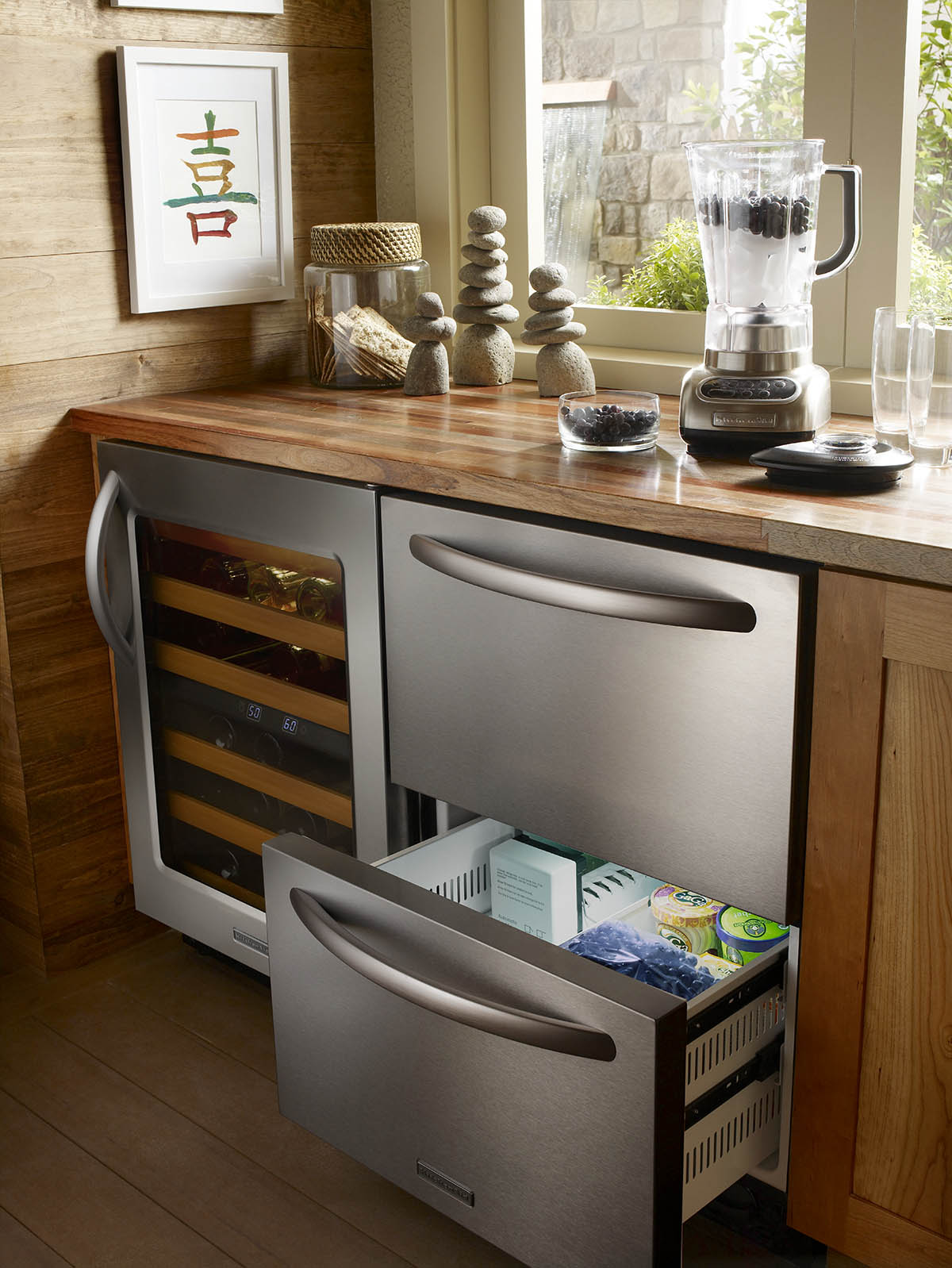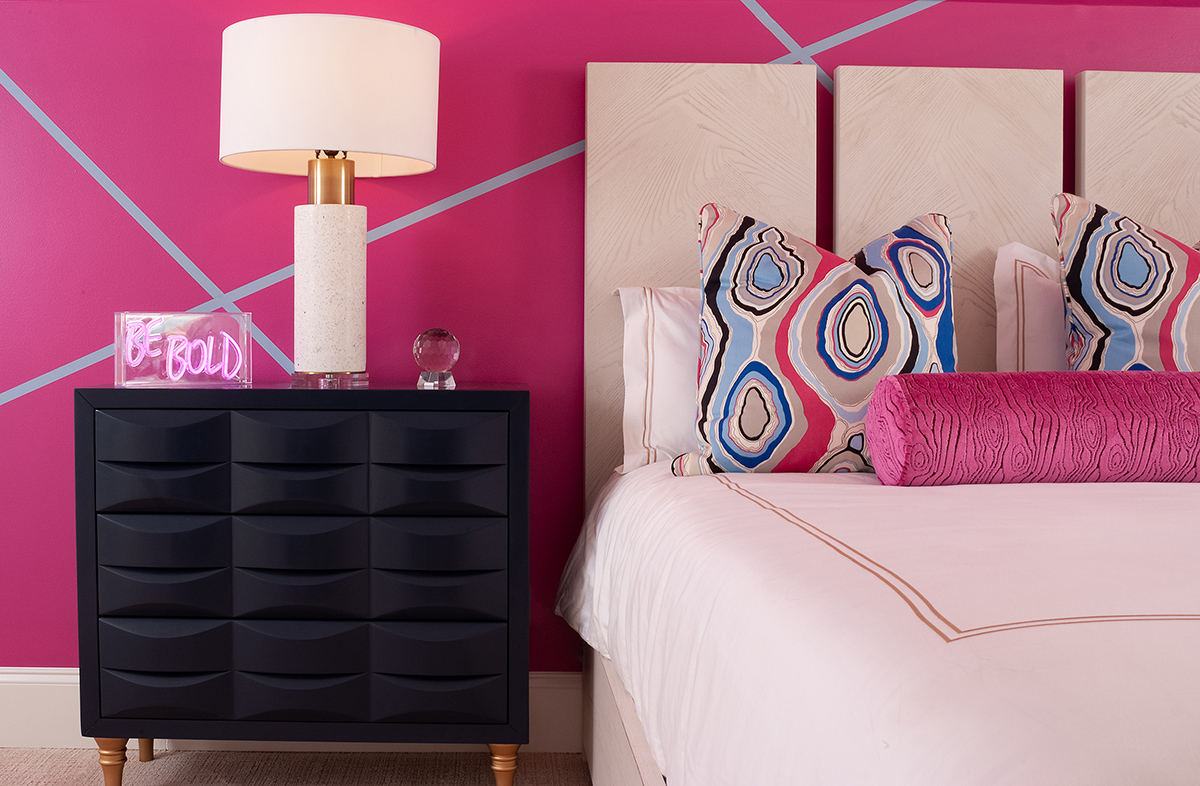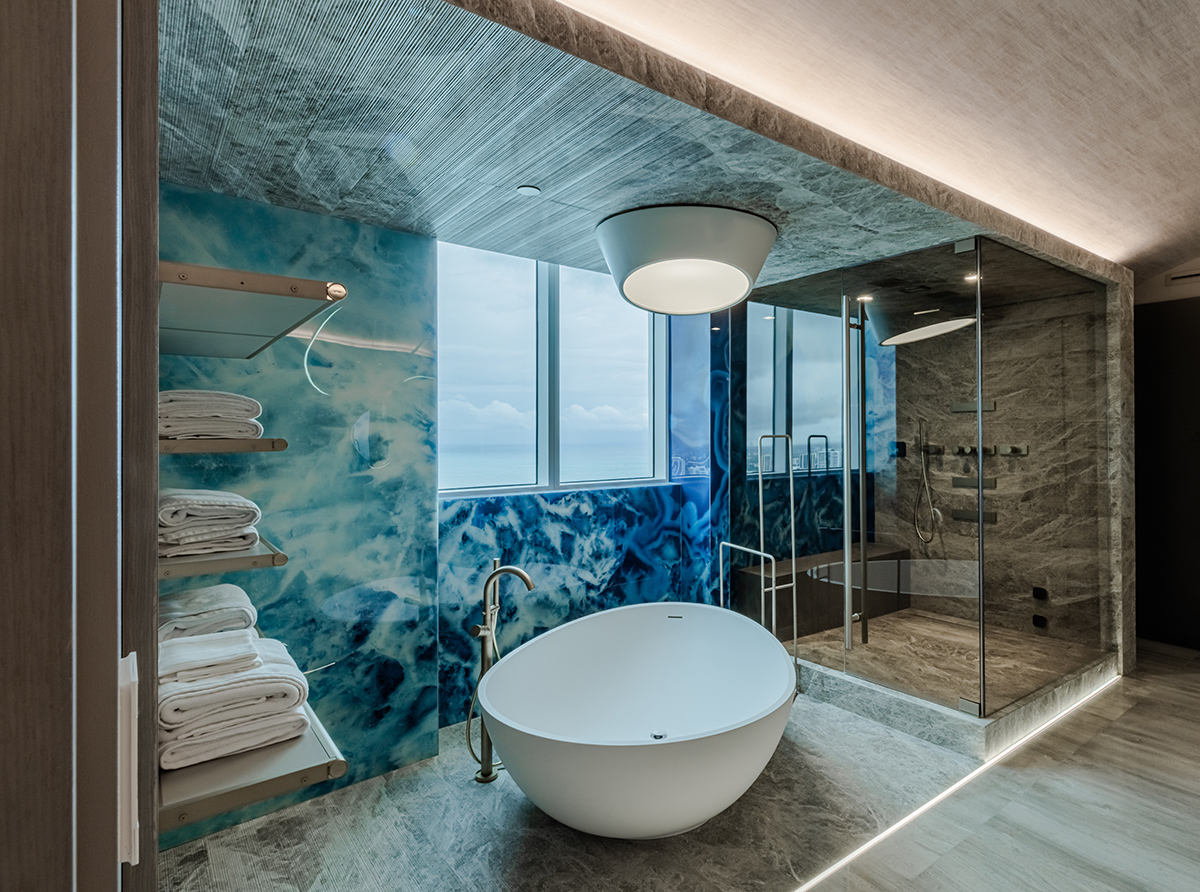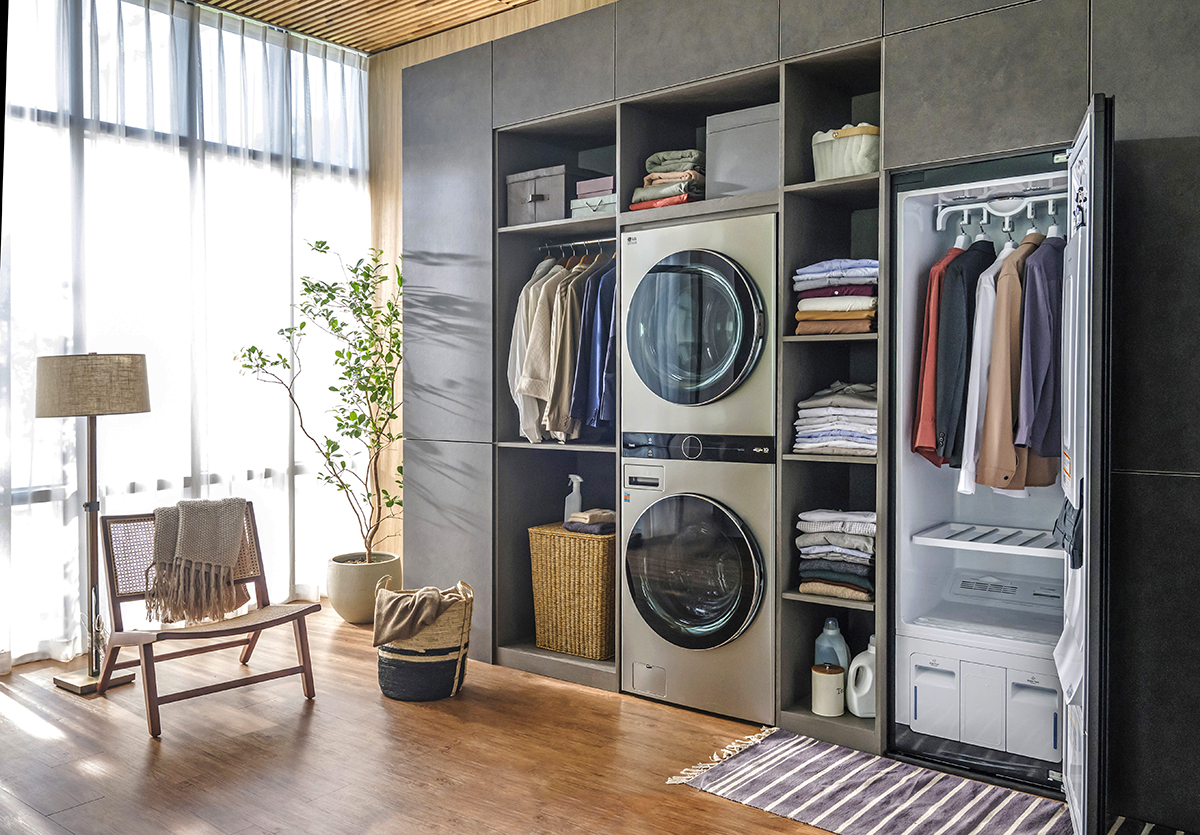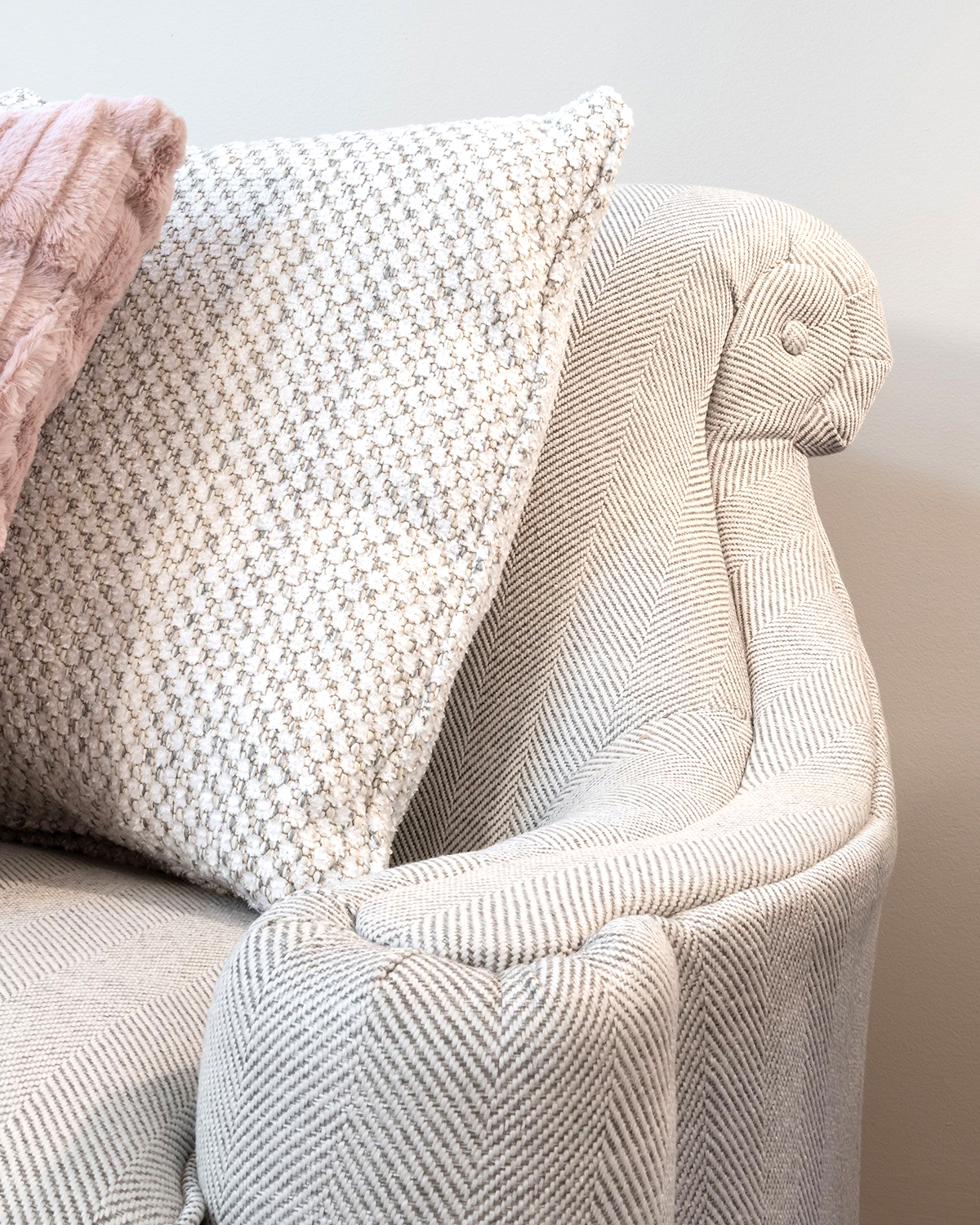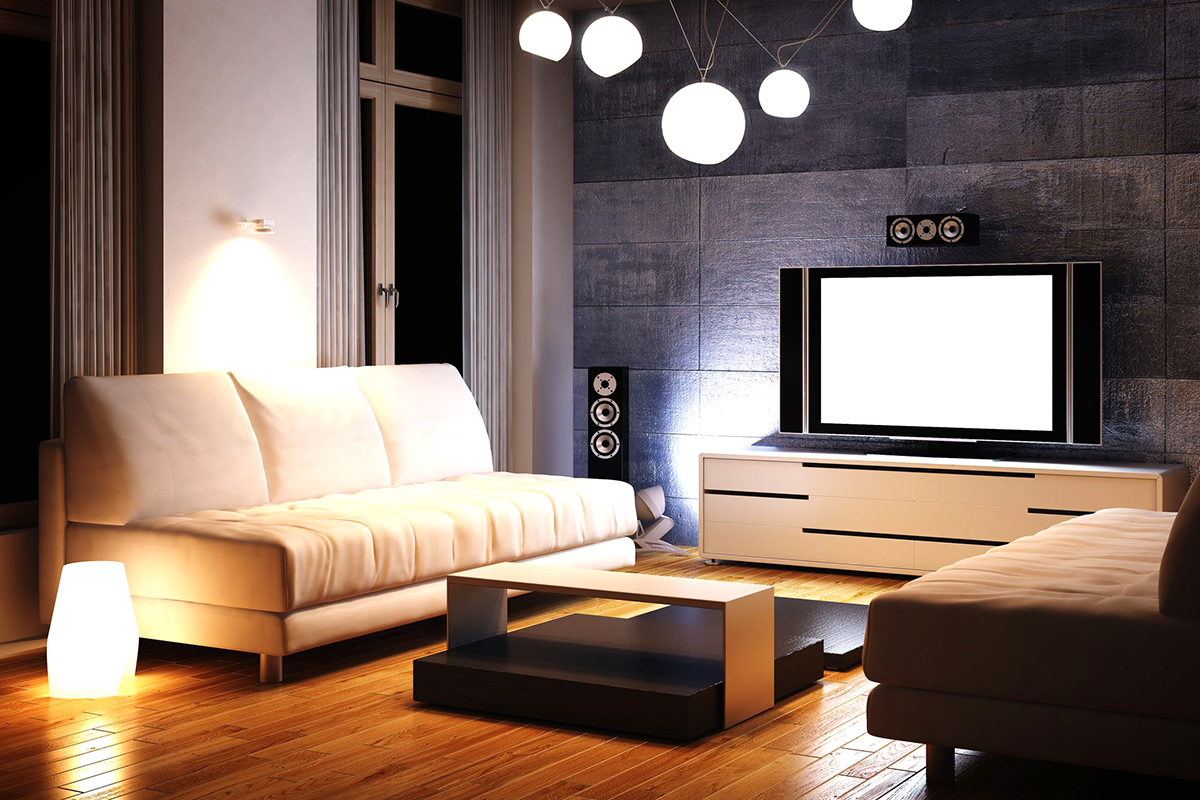WRITER | LIZ JERORE
PHOTO | @HOME CABINETRY AND INTERIORS
Raise your hand if you love the warm, impressive detail of exposed trusses or rough-hewn beams! If your house does not already feature this architectural detail, you may easily and affordably add it to just about any room in your home.
Once part of the structural integrity of only the grandest of homes, decorative ceiling beams can now be part of any home! From real to faux wood, the beams can add interest in an often-neglected area — the ceiling. The powerful design element of a decorative ceiling can transform the entire room, adding warmth and depth.
Traditional ceiling beams are wooden joists left exposed across the ceiling rather than hidden above the ceiling drywall. You can add nonstructural ceiling beams made from a wide variety of materials such as wood, plastic, foam, or resin. Here is a quick summary of options:
Reclaimed or Solid Wood Beams
Solid wood beams are the most expensive and the heaviest and require a professional skill level to install. For a DIY project, you might consider using a reclaimed timber beam for a less complicated application such as a fireplace mantle. You will appreciate the beauty “up-close” and will not break the bank!
Boxed Wood
Boxed wood beams create a stunning look for a room and, if built correctly, may appear to be solid wood beams. This beam type is a great alternative if you are concerned about the weight load wood beams would put on your ceiling joists. In addition, this type of decorative beam may be considerably less expensive than solid wood beams. You may choose a character wood to stain or an appropriate paint-grade material. One of the best advantages of this type of decorative beam is the ability to hide plumbing, wiring, and even speakers in these hollow three-sided lengths. Most experienced DIYers can easily tackle this type of installation.
Faux Wood
Faux woods are typically manufactured from extruded urethane (foam) vinyl or fiberboard. They are lightweight and available in many very convincing wood textures. They are a great choice if you wish to capture the look of very rustic roughhewn timbers. They are generally inexpensive, lightweight, and are available in a wide variety of colors and textures. We recommend using these materials only if they will be mounted to a high ceiling in order to avoid detection by a critical eye. This is particularly important if there is natural wood near the beams. However, many faux wood beams are so well made that they are very convincing!
Remember, you may always consult with a professional designer to tailor a master plan for your project. Experienced guidance is invaluable.
Beams are the new crown molding… have fun, experiment, and happy nesting!


